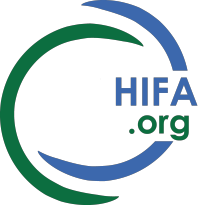Neil and HIFA colleagues
AI clearly raises fundamental global issues – possibly even existential ones for humanity. Even narrowing the focus to what might most interest HIFA – the current and future potential use of AI in health care in low-resource settings - raises a host of issues.
One useful starting point could be to establish appropriate criteria and associated indicators for use of AI in health care in these settings.
Such criteria and indicators would cover for example –
· reliability, relevance, availability, accessibility and confidentiality of information from AI;
· impact on skills, workload and efficiency of health workers;
· impact on healthcare and health;
· wider issues such as equity, sustainability, legality
· costs.
(Where comparison is to be made with alternatives, need to consider those that are in practice available, rather than some theoretical ideal)
This is somewhat reminiscent of past HIFA work on criteria for mobile health applications in low resource settings see –
https://www.hifa.org/sites/default/files/publications_pdf/FINAL%202017%2...(crctd)%20Assessment%20of%20mHealth%20applications%20for%20their1.pdf
(This used criteria based on
- Significance of the health problem(s): Is the application focused on a significant health or healthcare problem - a widespread serious condition, or an emergency or urgent need?
- Appropriateness of the targeting: is the application aimed at use in low resource settings or by low income or other priority groups e.g. mother and child, health educators?
- Value of the information: Is the information relevant to users’ needs for addressing the health problem; is it reliable; can it be easily related to practical action?
- Ease of assimilation of the information: is the information presented in an appealing and easy to understand way such as a video or voice clips; is it culturally appropriate and available in local language(s)?
- Availability of the application: is the application available across several regions or countries; is it available free to the user?
- Technological accessibility of the application: does it have a simple and intuitive user interface, is it accessible on a basic or feature phone; will it work “offline”; will it work on multiple operating systems is it pre-loaded? )
Maybe that should be revisited from an AI application perspective ?
Geoff
HIFA profile: Geoff Royston is an independent health analyst and researcher, former Head of Strategic Analysis and Operational Research in the Department of Health for England, and Past President of the UK Operational Research Society. His work has focused on informing the design, implementation and evaluation of policies and programmes in health and social care, and on fostering the capabilities of others to work in these areas. Associated activities have included modelling for understanding the performance of complex systems, analysis and communication of risk, and horizon scanning and futures thinking. He has also worked on information and communication technology in the health sector, notably in leading the design and national launch of the telephone and online health information and advice service NHS Direct, and has been an adviser to OFCOM. He has served on both scientific and medical UK Research Council panels, and as an impact assessor for the UK higher education Research Excellence Framework. He has been a consultant for the World Health Organisation, and is a long-standing member of the EURO Working Group on Operational Research Applied to Health Services. He is a member of the HIFA Steering Group, and of the mHIFA and the HIFA evaluation Working Groups. geoff.royston AT gmail.com

